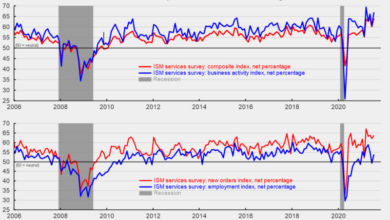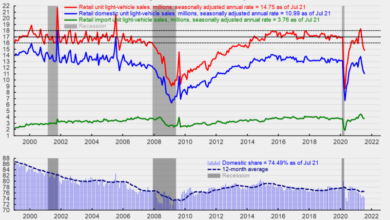The Invisible Hand Relies Upon Visible Prices

Adam Smith famously described each person who pursues his or her own interest in markets as being “led by an invisible hand” to improve the welfare also of countless strangers. Smith did not mean that the actions of investors, entrepreneurs, producers, merchants, workers, and consumers are intentionally controlled by an unseen puppeteer. Instead, this memorable metaphor refers to the reality that, in a market grounded in rights to private property (not the least of which is the right to say “no”) the intention that drives each person to satisfy his or her own interest incites each person to satisfy also the interests of others – others whose interests he or she would otherwise do nothing, or at least do much less, to satisfy.
Smith isn’t the first scholar to highlight the fact that each person acting in his or her own interest often improves the welfare of others without intending to do so – or, more precisely, without being driven principally by the intent to do so. Smith was beaten to this realization by, among others, Bernard Mandeville. Smith’s contribution was to embed this understanding in a compelling, systematic explanation of the workings of a society whose members have regular commercial engagement with a large and open-ended number of strangers.
The importance of the insight into the workings of the invisible hand cannot be overstated. We humans seem naturally to ascribe all observed patterns to intent. Among our species’ greatest intellectual advances was to come to understand that an order is often not the result of the intent to organize – that is, not the result of any intent to bring about that order. Order instead is often emergent, or as F.A. Hayek was fond of saying, “spontaneous.” Order often emerges, undesigned, from the mutual and ongoing adjustments that each individual component of the order makes to the actions of each of the other components. To use another of Hayek’s favorite phrases, orders are often “the results of human action but not of human design.”
The most obvious example of such undesigned order in human society is language. Each language emerged from individuals learning, through experience, the meanings sought to be conveyed by other persons who utter each of the many different sounds. Each language has a perceptible order, and is indisputably useful to its community of speakers. But while every language is clearly the result of human action, no useful human language is the result of human design.
The Globe-Spanning Market Order
An order every bit as useful as language – and one even more remarkable – is the modern market. No one designed, or could possibly design, the pattern of specialization and the vast commercial connections that incessantly today transform raw materials and human creativity and labor into the cornucopia of goods and services to which nearly every denizen of modernity has ready access. The market order arises from countless individuals each pursuing his or her own interest by acting on knowledge that is unique to him or her, yet acting on that knowledge in ways that also improve the prospects of unknown numbers of strangers being able to better pursue their own personal interests.
One of the essential facts of the market order is that it emerges from, as well as encourages, the use by each of millions – today, billions! – of individuals of knowledge that is unique to each of those individuals. Most of this knowledge was described by Hayek as “knowledge of the particular circumstances of time and place.”
At this very moment, you are benefiting from countless other persons having acted on knowledge that is unique to them. The coffee in your mug is affordable because myriad individuals perceived opportunities to lower the cost of producing shipping crates, fuel, insurance, electronic components… and on and on and on. The roof over your head and the floor beneath your feet required the exploitation of unique bits of knowledge of how to improve the operation of lumber mills, access to crude oil, production of power tools…. and on and on and on. The food in your belly is there only because uncountable numbers of strangers each took advantage of opportunities to improve the efficacy of fertilizer, the transportation of grains, the inventorying of groceries…. and on and on and on.
Because the market order by its nature puts to productive use detailed knowledge that is widely dispersed, frequently fleeting, often only tacit, and far greater in quantity than any human being could ever hope to comprehend, it’s impossible to design any alternative method of economic organization that rivals the market order’s vastness and complexity. And because this vastness and complexity are necessary for the market order’s prodigious productivity, the maintenance of – and, more so, the further improvement of – our standard of living requires that we continue to rely on the market order. To abandon it, or even significantly to suppress it, would be cataclysmic.
Prices
Just as the market order is essential to our survival, prices expressed in money are essential to the market order. Prices are among the visible results of the invisible hand’s successful operation, as well as the single most important source of this success.
Each price objectively summarizes an inconceivably large number of details that must be taken account of if the economy is to perform even moderately well.
Consider the price of a loaf of a particular kind and brand of bread. This price reflects, in part, the willingness of legions of consumers to spend their incomes on that sort of bread, as opposed to other goods or services. It also reflects details of the weather and of different governments’ trade and regulatory policies, each of which is among the many factors that affect supplies of wheat. And the price of bread reflects also supplies of yeast, of ovens, of electricity, of bakery workers, of delivery vehicles, of diesel fuel, of packaging materials, and of insurance. In turn, supplies of each of these inputs to the baking and distribution of bread are affected by the demands for these inputs for use in producing and distributing muffins, pasta, popcorn, particle board, bus tires, and jumbo jets – in short, everything else.
The price at the supermarket of a loaf of bread, a straightforward $4.99, is the distillation of the economic results of the interaction of an unfathomably large number of details from around the globe about opportunities, trade-offs, and preferences. The invisible hand of the market causes these details to be visibly summarized not only in the price of bread, but in the prices of all other consumer goods and services, as well as in the prices of each of the inputs used in production. These market prices, each easily visible in terms of a single ‘objective’ measuring unit of value (for example, the U.S. dollar), gives consumers guidance on how to get the most out of their incomes. These market prices also give investors and entrepreneurs guidance on how to deploy scarce resources in ways that produce that particular mix of goods and services that will today be of greatest benefit for consumers.
That this guidance is imperfect according to a standard that would be set by a supernatural intelligence is undeniable. Yet equally undeniable is the fact that this guidance is far better than any that we humans could achieve without market prices.
The market’s invisible hand, in short, alone makes possible – yet equally depends upon – visible market prices.
The post The Invisible Hand Relies Upon Visible Prices was first published by the American Institute for Economic Research (AIER), and is republished here with permission. Please support their efforts.



